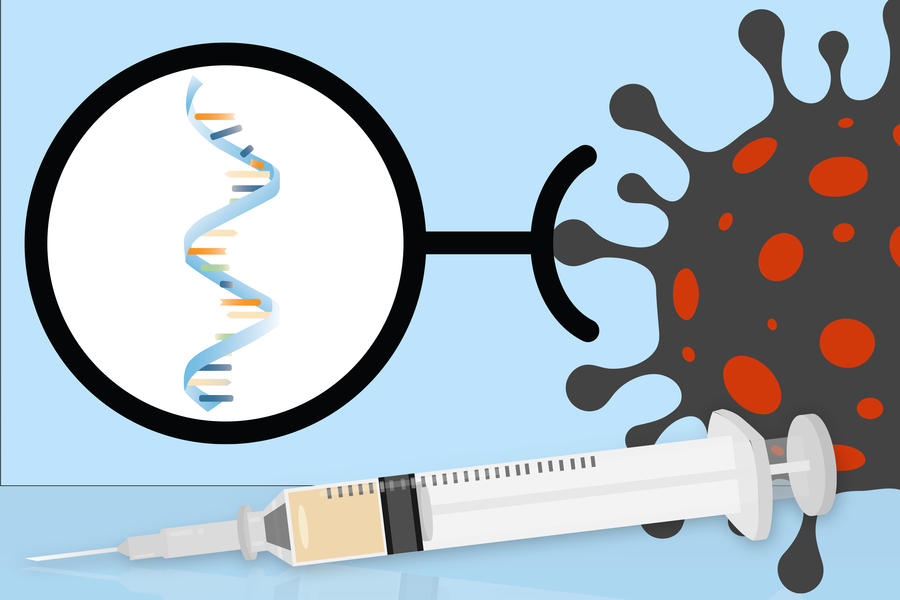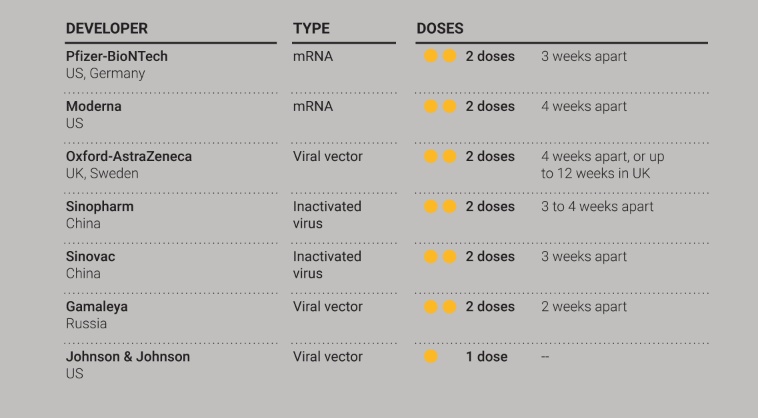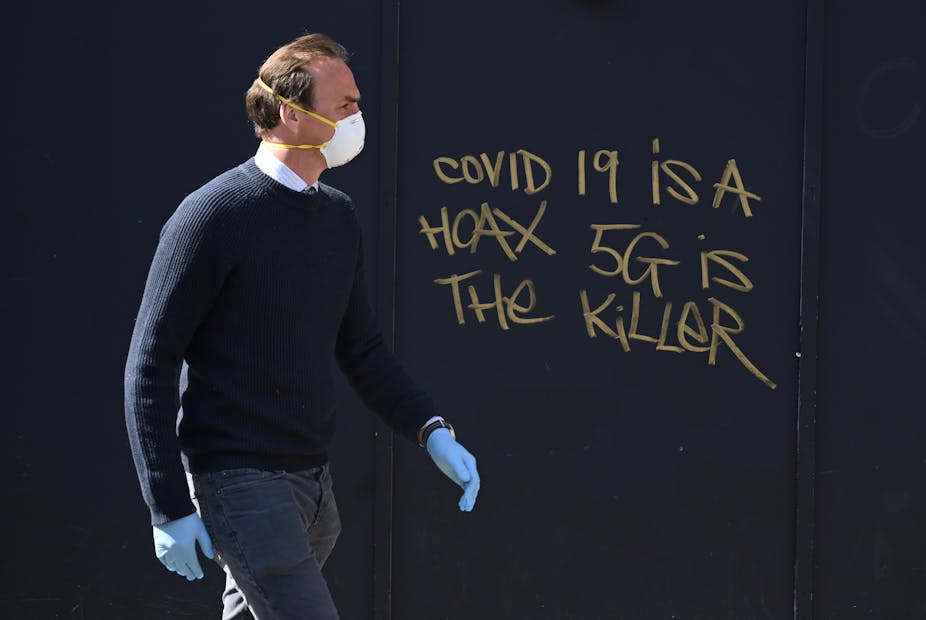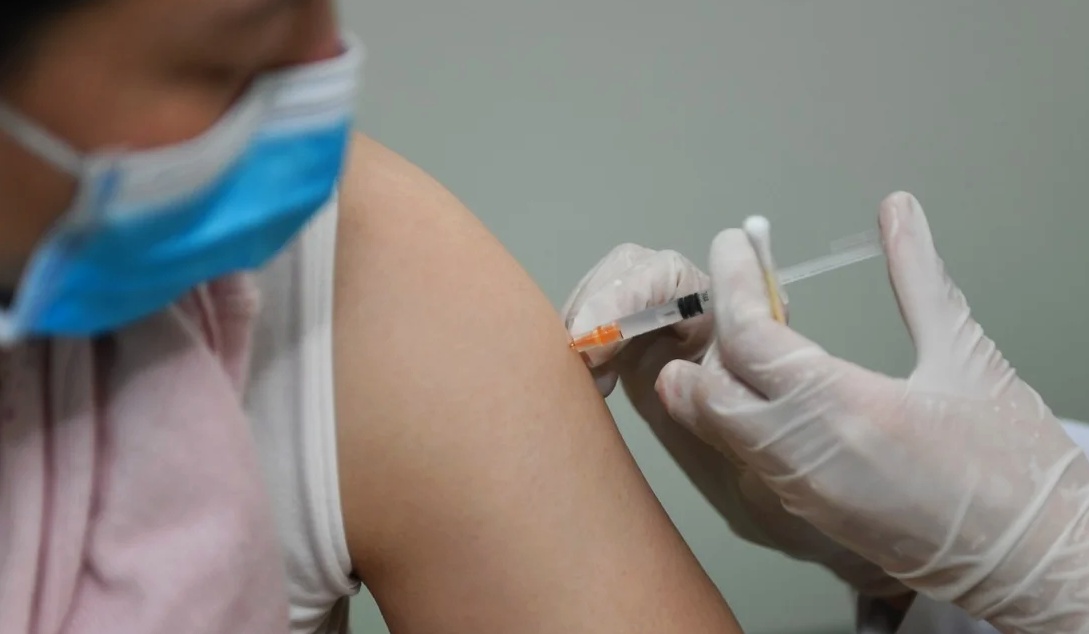The Covid-19 vaccine has come to Malaysia, and with it, the inevitable surge of conspiracy theories and social media nonsense. If you’re feeling concerned or uneasy about getting immunised, this article is for you.
If it weren’t so dangerous, it would be laughable. Shortly after Prime Minister Muhyiddin Yassin received his Covid-19 vaccine, filmed and broadcast in a bid to raise awareness and increase confidence, the rumours started flying.
“They switched the needles! Look, you can see that at first, it’s one needle, but in the next shot, it’s changed – they obviously changed the needle to give him something, but it’s not the Covid vaccine they’re trying to give us!”
Within hours, a dozen or more versions of this nefarious-sounding story were rocketing around on social media and chat groups. This is how gossip and conspiracy theories work in the 21st century. What used to take days or weeks to build to a fever pitch now takes minutes.

Were two different needles used? Yes, but there was a perfectly sound and logical explanation. Each vial of the vaccine contains multiple doses. A larger needle is used to efficiently extract the liquid from the vial. The vaccine jab is administered, however, with a smaller needle. The larger-diameter needle would (obviously) cause more discomfort, and of course could not be reused once used for a jab.
According to the Ministry of Health, “The different colour needle means different bore size. The needle used to aspirate from the vial is bigger in size (blue) to ensure smooth extraction. Smaller bore size needles (red or orange) are for inoculation to ensure less pain and bruising,” the ministry explained. “In addition, different needles are required to prevent cross-contamination between patients. Importantly, the vaccine drawn from the vial and given to the patient is unchanged.”
So how many people will worry about getting the vaccine now, or even decide not to do so, simply because they saw this preposterous story on social media about some devious needle-swapping voodoo with the Prime Minister’s jab? Hopefully none, as the Ministry of Health blitzed mainstream and social media channels with not only the video of the vaccination, but the follow-up explanation, as well.
Conspiracy theories are nothing new, but social media has amplified the messaging and greatly expanded the reach and allowed these wild comments to spread unchecked at astounding speed – virally, if you will.
But even today, just as it has always been, the best antidote for nonsensical conspiracy theories is education. Facts, for anyone willing to learn them, lead to genuine understanding, which will always win out over the “I heard from someone on Facebook whose cousin told him that she had read…” approach.
THE SHORT VERSION
There’s a lot to unpack about how to deal with conspiracy theories and the people who buy into them, understanding vaccines in general, and learning about how the Covid-19 vaccine works, and why you need to take it.
Here’s the short version, though:
- Over 355 million doses of the vaccine have now been given worldwide with no unexpected side effects reported. (Note: For the purpose of this article, “the vaccine” will generally refer to any of the approved and deployed Covid-19 vaccines, five of which have been contracted for supply to Malaysia.)
- An increasing body of real-world evidence indicates that the Pfizer vaccine, in particular, which accounts for nearly half of Malaysia’s entire order of 66.7 million doses, is highly effective in not just preventing Covid-19 in the person who has been vaccinated, but also in stopping the transmission of the disease, too.
- The mRNA-based vaccines that you may have heard about are safe and effective. Though they are rather new to market, they are not new to science. They are quite different to more traditional vaccines (which use a weakened strain of the pathogen). The nature of mRNA vaccines is what, in part, makes them so effective, and also what allows the production to be scaled up so incredibly. Much more on how these vaccines work below.
- Covid-19 mRNA vaccines do not rewrite or in any way alter your DNA, one of the wilder ideas that’s floating around. They merely carry information to teach your cells how to make a new protein that, in turn, triggers an immune response, generating Covid-fighting antibodies, and delivering immunity.
- Malaysia is targeting immunisation for at least 80% of the country’s entire population – citizens and non-citizens alike – in order to reach herd immunity. It’s also starting from a good place, with only 15% surveyed from November to January indicting they would not get the vaccine.
- Side effects and reactions to the vaccine are minimal, mostly involving discomfort and slight swelling at the jab site, minor headaches, fatigue, and in some patients, fever and chills. The symptoms resolve in less than a week, and are merely an indication that the vaccine is working and your body is building protection. Not all patients will experience side effects, but according to medical experts, those who do can treat the symptoms with common, over-the-counter pain medication.
For more complete details on all of this, keep reading.
HOW DO VACCINES WORK?
A typical vaccine works by training your body’s immune system to recognise and combat specific pathogens, either viruses or bacteria. To do this, certain molecules (called antigens) from the pathogen must be introduced into the body to trigger an immune response. Typically, a weakened or otherwise inactive strain of the pathogen is used to synthesise the vaccine. The body’s immune system attacks the pathogen upon its introduction, but since it’s a weak strain, symptoms are mild. Your body’s immune system ‘learns’ how to fight the pathogen, so if and when a stronger strain attacks, your immune system then has the tools and the know-how it needs to aggressively battle the invading pathogen before it can spread in your body. This is the basis of immunity, both in the natural sense and in the introduced, or vaccinated, sense.

Typically, successfully researching, developing, and introducing a vaccine can take several years, often approaching a decade. A fast schedule would see that vaccine approved for introduction to the market within, say, four or five years.
So how did the Covid-19 vaccine get rolled out in a year? Part of it is just down to the urgency catalysed by a global pandemic that was upending all aspects of human life. Necessity is, after all, the mother of invention, so it stands to reason that urgent necessity might be the mother of rapid invention.

But another reason is the breakthrough use of something called messenger RNA used in some versions of the Covid-19 vaccine, and here’s where the science kicks in. If you took biology in school, you may recall something about ribonucleic acid. That’s RNA, which works in concert with its much more famous sibling, deoxyribonucleic acid (DNA).
Basically put, DNA and RNA are biological ‘coders’ which write, decode, and regulate the expression of genes and control cellular protein synthesis. (That last protein synthesis part is really important for the whole vaccine thing, so remember it.) These nucleic acids are complex macromolecules that, along with three others – lipids, proteins, and carbohydrates – form the fundamental building blocks of life.
Like any good team, the two nucleic acid macromolecules work smoothly together, but have very different roles. DNA is double-stranded, has a long chain of building blocks (called nucleotides), and can replicate on its own. On that long, intertwined double strand, DNA carries all the instructions necessary for a living organism to survive, develop, and reproduce, so it’s pretty important.

RNA, however, is single-stranded, considerably shorter, and cannot self-replicate. The role of RNA is complex and broad in scope, but in short, it functions as a translator, converting the ‘codes’ stored in DNA into proteins. There’s much more to it, but for the purpose of vaccines, that’s the key role of RNA.
For a good translation, you need a good messenger. If you’re using Google Translate, the messenger is pretty basic: it’s the keyboard you use to input the word or phrase you want translated. RNA doesn’t have a keyboard, but it does have a good messenger that’s essential to RNA’s functionality. Appropriately called messenger RNA, or mRNA, this single-stranded molecule carries information that is read by a specific structure found inside every living cell, the ribosome. Remember, the key role of RNA is to convert information in DNA into proteins – the process is called transcription.
The synthesis of that protein is the function that’s leveraged in the Covid-19 vaccine, and it’s fundamentally different to how the aforementioned traditional vaccines work.
Remember, mRNA basically works as a messenger (it’s right there in the name) to facilitate protein synthesis. The mRNA delivers the instructions, which are decoded by the ribosome, on how to make that protein.

In the new Covid-19 vaccines, mRNA teaches your body’s cells how to make a specific protein (or in some cases, just a part of a protein) that will trigger an immune response. That response produces antibodies, and that is what protects you if the real SARS-CoV-2 virus, which causes Covid-19, manages to get into your body.
According to the CDC, Covid-19 mRNA vaccines give instructions for our cells to make a harmless piece of what is called the “spike protein.” The spike protein is found on the surface of the virus that causes Covid-19.
Covid-19 mRNA vaccines are given in the upper arm muscle. Once the instructions (mRNA) are inside the immune cells, the cells use them to make the protein piece. After the protein piece is made, the cell breaks down the instructions and gets rid of them.

Next, the cell displays the protein piece on its surface. Our immune systems recognise that the protein doesn’t belong there and begin building an immune response and making antibodies, like what happens in natural infection against Covid-19.
At the end of the process, our bodies have learned how to protect against future infection. The benefit of mRNA vaccines, like all vaccines, is those vaccinated gain this protection without ever having to risk the serious consequences of getting sick with Covid-19.
BUT ARE THEY SAFE?
Yes. Though mRNA vaccines are new to market, they’ve been known and studied for many, many years. What changed? Simply put: Modern advancements. These vaccines can now be made in laboratories using available materials and technology. Unlike in decades past, today, the whole process can be standardised and dramatically scaled up – something that comes in handy when you’re trying to immunise billions of people.
Another helpful fact is that several countries were working hard using multiple techniques to create this vaccine. Currently, six have been at least preliminarily approved and authorised by various countries, with another from Johnson & Johnson, which requires just one dose, receiving FDA approval in the US on February 27. (Two of these, Pfizer’s and Moderna’s, use the mRNA method.) Another nine vaccines are in the phase 3 clinical trial stage now, so there could be as many as 16 different Covid-19 vaccines in the coming weeks and months.
A report published by the Massachusetts Institute of Technology explains, “A key advantage of mRNA is that it is very easy to synthesise once researchers know the sequence of the viral protein they want to target. Most vaccines for SARS-CoV-2 provoke an immune response that targets the coronavirus spike protein, which is found on the surface of the virus and gives the virus its characteristic spiky shape.”

However, mRNA vaccines have still been subjected to the same rigorous testing, clinical trials, and safety standards of any other vaccine or medication.
To learn more on how a vaccine moves from research to authorisation (infographic from the US Food & Drug Administration), click HERE.
As noted, not all the approved vaccine are the mRNA type, though that type arguably appears to deliver the highest efficacy rates so far (Pfizer, 95%; Moderna, 94.1%). The chart below shows the different types.

Malaysia will receive 66.7 million doses of the vaccine, by the following breakdown:
- 32 million doses from Pfizer-BioNTech (US/Germany)
- 12.8 million doses from AstraZeneca (UK/Sweden)
- 12 million doses from Sinovac Biotech (China)
- 6.4 million doses from Gameleya Research Institute (Russia)
- 3.5 million doses from Sinopharm (China)
COMPARED TO OTHER VACCINES, ARE THE RESULTS OF THESE mRNA VACCINES ANY DIFFERENT?
Any vaccine has the twin goals of preventing infection and stopping transmission. Some achieve only one of those goals, some achieve parts of each goal. Some achieve both goals.
So far, all the studies and reports for the Covid-19 vaccines have been encouraging. It’s still early, though, and there are always caveats to consider, but here’s what is known so far.
The latest research, a study from Israel, indicates that the Pfizer vaccine (technically, the “Pfizer-BioNTech SE Covid-19 vaccine”) is remarkably effective at both preventing Covid-19 and at halting the spread of the virus.
That is basically the ‘holy grail’ for any vaccine, according to a report published by Bloomberg. When this happens in a population at a 100% level, it’s called ‘sterilising immunity’ and simply means that no one can be infected and sickened by the virus. That is a really lofty goal, though, so the runner-up prize is the prevention of sickness by stopping the pathogen from causing the disease.
That’s what most vaccines do, and that’s certainly what the Covid-19 vaccines do, including Pfizer’s.

But now, there’s a strengthening claim that says that this vaccine also prevents the transmission of the virus by close to 90%. That’s very encouraging, but as the Bloomberg piece notes, comes with a lot of caveats, and it’s also worth pointing out that the Israeli study hasn’t yet been published. It could ultimately all turn out to be a very good thing, but it’s too soon to say.
That said, though, a similar study to Israel’s has been conducted in the UK with very similar curbs on transmission (86% vs 89.4% in the Israeli study).
The body of evidence is growing, and it’s growing more and more positive.
In other words, as a lengthy explainer from Vox Media makes clear, “Even as we wait for more definitive studies on the vaccines’ effects on transmission, more and more scientists think we do have enough information to feel pretty good about the vaccines’ capacity to give us back a semblance of normalcy as we approach a year of life in a pandemic.”
But none of that will happen if too many people refuse to take the vaccine.
HOW DO I DEAL WITH MY OWN SECOND THOUGHTS? OR WORSE, WITH CONSPIRACY-LOVING FRIENDS OR FAMILY?
The underlying psychology that drives our fascination with and belief in conspiracy theories is in itself fairly interesting, but not really the point. Suffice it to say that there is no one factor nor any set of factors – not gender, not intelligence, not age, not education, not socioeconomic status – that can create a perfect shield against believing falsehoods and conspiracies. It affects everyone, though to highly variable degrees. And it’s nothing new.

The real problem these days is social media. According to a report by Financial Times, “The extent of the problem on social is hard to overstate.” They referenced a 2018 study of 126,000 news stories, sampled between 2006 and 2017, and found that by every metric, the sheer volume and spread of rumours, hoaxes, and lies utterly eclipsed truth.
The report also referenced another telling study, which showed that misinformation thrived in this realm because users tended to congregate in communities of interest or of similar viewpoints, “which causes reinforcement and fosters confirmation bias, segregation, and polarisation.” We’ve all seen this: The online echo chamber.

Dealing with people who strongly subscribe to outlandish (5G towers caused Covid-19!) or even relatively mainstream conspiracy theories (vaccines lead to autism!) is a delicate balancing act. Many are actually themselves victims of their own beliefs. In one example, a man named Brian Hitchens and his wife Erin, living in the US state of Florida, believed in a number of Covid hoax claims and did not take any precautions because of these beliefs. Erin contracted the virus, and ultimately died from its complications at age 46. Since then, Brian has publicly campaigned and posted on Facebook, urging others not to make the same mistake.
Recognising that these ‘believers’ are also victims, you want to be empathetic and understanding, as much as you can. Nobody likes being mocked or ridiculed, least of all for something they really believe in, and if you’re dismissing or insulting them, you can see how that would be counterproductive if you’re trying to get them to embrace facts and reality.
So, rather than being openly adversarial, asking questions in a sincere and empathetic manner can stimulate their own critical thinking skills and ultimately be effective. This also gives them a face-saving way to change their mind or adjust their beliefs under their own agency. So rather than admonishing someone for their hesitancy to get the vaccine, simply ask them a question like, “So given what you know, what information would you need in order to accept a Covid vaccine?”
Here are some resources to help you talk to friends or family members who are subscribing to conspiracy theories: HERE, HERE, and HERE.

WHAT CAN WE EXPECT IN MALAYSIA?
Malaysia has set a target to immunise at least 80% of the country’s population. Given a broad public acceptance of the vaccination here, something that is sadly lacking in many other countries, this target is realistically attainable, though by no means a sure thing.
If you look at the “Would you get a Covid-19 vaccine?” graph below, you can see where Malaysia falls with regard to its overall scepticism about the Covid-19 vaccine:

Essentially, the less red on the graph, the more likely a country is to achieve sufficient vaccination levels for herd immunity in its population. Surveys in Malaysia suggested about 15% of respondents did not think they would accept the vaccine. That’s better than most other countries, and something else needs to be considered, as well.
The survey dates ran from November 17, 2020 to January 10, 2021. For most people, a vaccine during those weeks was hypothetical. Now it’s here. Even by the beginning of February, the global number of vaccine jabs had surpassed the aggregate total number of infections since the pandemic began. Now, well over 355 million doses have been safely administered, and that number is growing significantly every day. (If you want to see a nifty worldwide ‘vaccine tracker,’ just click HERE.)
So with every passing week, it’s at least reasonable to hope (if not outright expect) that the grey ‘don’t know’ category for most countries will shrink, and perhaps that even some of the ‘no’ responses will shift to ‘yes.’ Of course, trying to predict human behaviour is a fool’s errand, so it could be the complete opposite.

With regard to the Covid-19 vaccination drive in Malaysia, it’s accurate to say that the country is starting in a very enviable position. The government has contractually secured 66.7 million doses, more than enough to inoculate everyone over 18 in the country with the necessary two doses. They are, quite commendably, providing the vaccine free of charge to everyone, citizen and non-citizen alike with no regard to a person’s legal residence status here, which will absolutely increase the rate of acceptance. And with only 15% reporting over a month ago they’d say ‘no’ to the vaccine – 60% said ‘yes’ and 25% ticked ‘unsure’ – that’s a pretty strong start point. (A different report in local media, also from January, showed that 67% of Malaysians were in the ‘yes’ camp, with 16% saying ‘no lah’.)
So if you’re on the fence about whether or not to get the vaccine, get off social media and get real information from experts and authorities. The CDC, WHO, and Malaysia’s Ministry of Health are all good places to start for factual, science-based information about Covid-19 and its vaccines.
These days, with the whole of the internet at our fingertips, it’s all too easy to get a lot of misinformation, but it’s equally easy to get the facts, and to double- and triple-check them against other sources, too.
The more we learn, the more empowered we will be, and we can then make well-informed decisions based on facts… not speculation and misinformation.
For all you need to know about Malaysia’s National Covid-19 Immunisation Programme, CLICK HERE.
"ExpatGo welcomes and encourages comments, input, and divergent opinions. However, we kindly request that you use suitable language in your comments, and refrain from any sort of personal attack, hate speech, or disparaging rhetoric. Comments not in line with this are subject to removal from the site. "



















